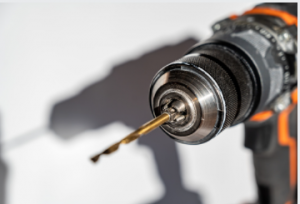In the past, cordless impact drivers were a speciality tool, scarce on construction sites and rare on store inventories. Now, you’ll see many different models in almost any local tool retailer and hear their machine-gun fire their gun everywhere-even in the garage. So if this is your first time buying an impact driver, what are some tips in buying an impact driver?
 First off, know your torque and speed ratings before you go out and purchase the tool. Just as cars have different horsepower ratings, the lower the RPM, the lesser the force generated by the fastener. Some of the things you can do to get a good feel for the torque and speed rating are checking the torque converter and seeing how the tool handles in slow-speed environments. In addition, you can check the RPM with a deck of cards and measure the GPM against that.
First off, know your torque and speed ratings before you go out and purchase the tool. Just as cars have different horsepower ratings, the lower the RPM, the lesser the force generated by the fastener. Some of the things you can do to get a good feel for the torque and speed rating are checking the torque converter and seeing how the tool handles in slow-speed environments. In addition, you can check the RPM with a deck of cards and measure the GPM against that.
Once you’ve figured out the best way to determine your needs, it’s time to find the best impact driver. To do this, run the tool’s cordless motor without the load (that would be the case if you were using it to drill a hole and nothing else). You’ll get a pretty good estimate of how fast the tool will run. Then, set a speed that you think your tool can handle. If it’s a little too fast for your current speed, try a minor impact driver; if it’s a little too weak, get a larger one.
One of the most important things to look for in an Adelaide-Tools aeg impact driver is the tip diameter. A smaller tip diameter means a much smaller diameter of the hole to drill. It will ensure that your holes don’t hit each other and prevent your hammers from stripping each other.
The two most common types of impact drivers are the hammer drill bits and the hex bits. Both of these tools can work well. Hammer drills have a smaller size than hex bits, and this means they will fit better in tighter places, and they can sometimes work faster than hex drivers. They also tend to make less noise than hex drivers, so you won’t bother anybody when using them. Hammer drills have a bit that wraps around the head of the screw, which makes them great for drilling into soft or compacted metals.
The next thing to consider is the torque of your impact driver. It is measured in Newtons. Newtons is the force of torque per unit of rotation. The average strength of an impact driver of this rating is about nine Newtons. So, if you’re using a drill with an impact rate of nine Newtons, this probably isn’t a tool that you should use. If you need a more substantial or faster torque, you will need an electric motor or an electronic torque converter.
Lastly, think about the cost of the tools. Some drills can cost a lot more than others, so keep this in mind. You may not need the most expensive tool, but if you want to get a good deal on one, look for used or refurbished products or try to shop around to see if there are any sales on impact drivers at your local hardware store.
With these tips, you should be ready to start using your driver. Ensure you pay attention to details, such as getting a good fit for your hands and having the right tip. There are plenty of high torque drivers out there that don’t require the tip, to be exact. Instead, they use a weighted nose, which makes it a bit easier to grip and strike without hurting your palms. Better drivers will allow you to hit more holes, do a better job, and cost less in the long run.
